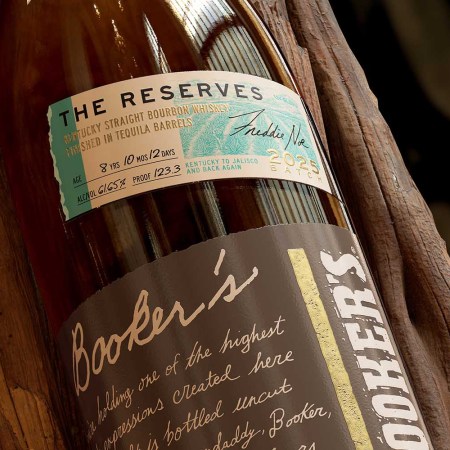There’s no denying that Korean culture has been booming in the United States. Between the spread of K-pop, growing popularity in Korean dramas and an increase in Korean cuisine, America is having a moment with everything the culture has to offer, including its most popular spirit — soju. The Korean alcoholic beverage has been gaining more consumer support lately —according to recent Datassential data, interest has soared 50% in the past year — especially with the Gen Z crowd. Still, the vast majority of American drinkers are unfamiliar with the drink. So an explainer is in order.
What Is Soju?
Soju is a clear distilled spirit that takes many forms and has some complexities. Brandon (Bran) Hill, the founder and Master Distiller of Tokki Soju — a handcrafted traditional rice soju brand based in Brooklyn — explains the spirit has been around since “the 13th century since the Gyreo dynasty.” Soju is traditionally made of rice, but today there is no specific set of rules on how to produce it, unlike other spirits like whiskey and tequila. Soju is now crafted from many different fruits and grains and bottled at various alcohol percentages. Once only made in Korea, it’s now made all over the globe.
According to Hill, “it has a long history of grain on fermentations and using an enzyme called ‘nuruk,’” which is made from wheat and rice and is unique to the Korean brewing process. It’s then typically distilled in traditional ceramic pot stills and diluted to a lower alcohol content and flavored, if desired.
The World’s Best-Selling Spirits May Not Be Familiar to Americans
Indian whisky, soju and RTDs dominate the annual Brand Champions listSoju is known for its versatility and subtle flavor profile, says Gareth Tootell, Regional Director of Operations at Restaurant Associates in New York City, who works directly with Genesis House (a restaurant that holds one of the largest soju selections in the city). “Traditionally crafted from rice, contemporary soju may also be produced using wheat, barley or tapioca, allowing for a rich diversity in taste and texture,” he says. “With its transparent appearance and neutral palate, soju is frequently likened to vodka, yet it is characterized by a considerably lower alcohol content, typically ranging from 16% to 25% ABV.”
But as Chris Park, who co-founded Hummy Soju Seltzer points out, the spirit is not just a drink. “As Korean American immigrants, soju is a connection to our cultural roots, a reminder of our heritage and a symbol of camaraderie and togetherness, woven into Korean tradition,” he says. Park explains that for Hummy, he and his team “envisioned creating a product that seamlessly blends Korean tradition with American accessibility” to help foster connections, “one can at a time.”

Different Styles
While you can still enjoy more classic sojus that use rice as a base and traditional production methods, there are now many regional variations and flavored options as well. For example, Tokki has three main varietals, including Tokki Soju White Label, made to be served neat (chilled or at room temperature); Tokki Soju Black Label with a higher ABV for a stiffer drink or use in cocktails; and Tokki Soju Gold and Garnet Labels, which are the barrel-aged varieties that can be sipped or used as whiskey replacements in your favorite drink.
What to Buy
Jinro Soju is a good place to start. “It’s globally recognized as one of the biggest and easiest first tastes for someone inexperienced with soju,” Tootell says. (And yes, it may very well be the world’s best-selling spirit.) There’s also Won Spirits, which is new to the market but has quickly gained popularity, as it’s owned by the Korean hip-hop artist Jay Park.

Using It in Cocktails
Bobby Kwak — who owns several restaurants in New York City, including Korean BBQ go-to Ahgassi Gopchang — says using soju in cocktails is as easy as mixing a drink with vodka. “Because soju is often called the Korean vodka, you can substitute any cocktail made with vodka with soju, and it will add a smoothness and mild accent to the drink,” he says.
If you need some inspiration, Kwak’s favorite go-to is the Korean Yogurt Soju Cocktail, made with Yakult yogurt, a splash of Sprite and soju. But there are even easier options to test out a soju concoction, thanks to the explosion of canned cocktails, including Park’s Hummy. Jumo Soju Cocktail, founded by Grace Choi, is another brand we like that makes its canned drinks with craft-distilled soju and real juices. Plus, its mission to make soju more accessible and approachable is a nice nod to the overall essence of the Korean spirit.
Why Is Soju Gaining Popularity Now?
Between its mild flavor and versatility, soju is a great spirit with which to make a solid drink. It also has a low ABV, which many younger generations are leaning toward. And let’s not forget the country’s appreciation for Korean culture.
Ming Han Chung, co-founder of craft soju distillery Minhwa Spirits in Doraville, GA, explains that “audiences around the world are embracing more Korean cuisine” and are now more curious “in exploring the traditional drinks around it.” With more and more modern Korean restaurants around the country adding these traditional spirits to their cocktail programs, it seems like the world of soju is destined to grow further.
Every Thursday, our resident experts see to it that you’re up to date on the latest from the world of drinks. Trend reports, bottle reviews, cocktail recipes and more. Sign up for THE SPILL now.

























